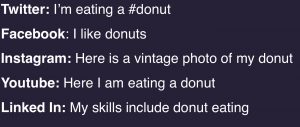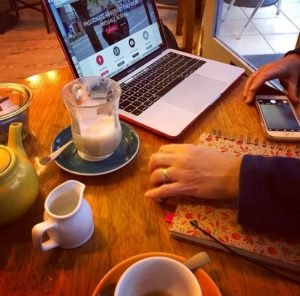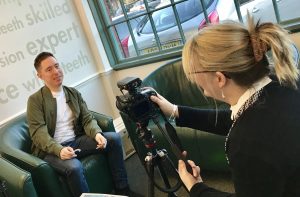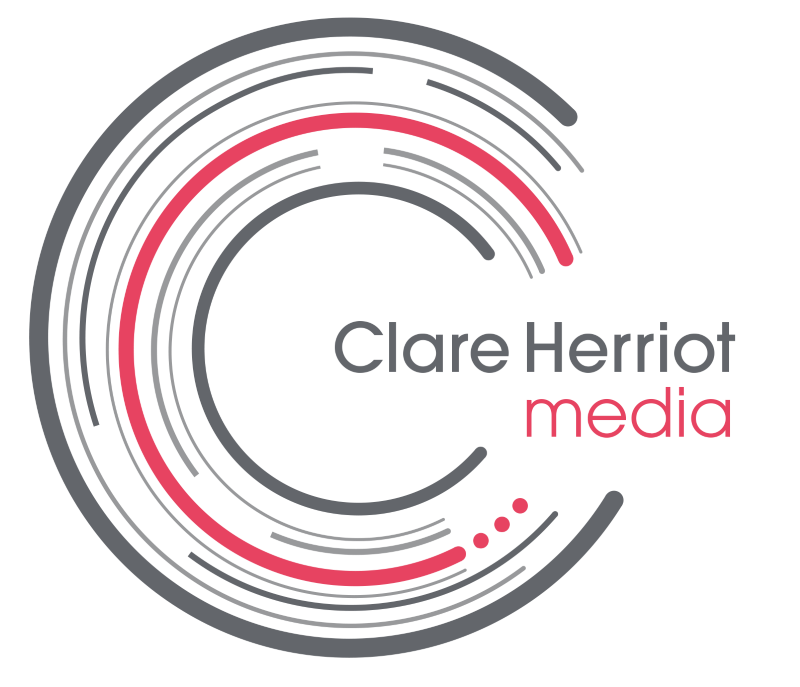It’s hard to believe that social media as we know it, wasn’t around 20 years ago. Apparently, the first social media site, Six Degrees, was created in 1997 and YouTube not until 2005!
We have seen the social media landscape change drastically over the last few years and it will continue to grow and evolve. So embrace it, use it, master it and make it work for you and your business. Just like the well-known children’s song ‘We’re going on a bear hunt.’ We can’t go over it. We can’t go under it. We’ve got to go through it!
If you have 12 minutes to spare, do take a look at the webinar l prepared recently for the London Enterprise Club. It will give you insight and examples about how to get started on social media and bring your business to life. Alternatively, if you have just 5 minutes, I have listed many of my suggestions in the blog below.
[YouTube_WD id=30 item=16]
Why use social media?
The average person checks their device over 100 times a day and with 2 billion people around the world using social media, it’s no surprise that it really does influence our buying habits too.
The other day I was chatting with a colleague about a hotel I had stayed in recently, without hesitation, she looked the hotel up on Facebook (not even the website) for information and reviews.
Your social media channels are the public online face of your business, so make them count.
Benefits of each platform

All social media platforms look a little different, you don’t need to be using all of them for your business, so consider which ones are right before throwing yourself in.
When thinking about the way you communicate as a business, social media plays an important role, especially as it is an excellent way for you and your customers to connect.
56 million users on Facebook are aged 35-44, however, it is still used by all ages.

Facebook can really showcase your business with photos, videos, reviews and your contact information.
With recent changes on Facebook, bear in mind that your posts will appear less frequently on your follower’s timelines than they use to. You will therefore need to work harder to create content that encourages a response, or better still, pay for the campaigns that really matter.
YouTube is the second most popular platform with six billion videos watched per month and by 2019, 80% of all internet traffic will be video based.
Great for ‘on the hop’ tweets and comments, the here and now. We used to be given space for 140 characters, but now have room for 280. Try tagging ‘movers and shakers’ on Twitter and endeavour to have an image or video in your tweets.
Twitter is useful for business to business support. Try retweeting, replying and sharing current news within your field, this demonstrates your knowledge and gets your voice heard.
I like to create and use Twitter lists. Private or public, use them to help you focus your time and if you create a good list, others may even subscribe to that list.

Picture based, hash tag led and great for on the go. Plus, it is easy peasy to share to Facebook and Twitter. Popular with 15 – 24 age group, closely followed by 25 – 34.
Great for posting, sharing, replying, connecting and joining groups that interest you. Make sure you have a business page as well as a personal profile. Follow people that relate to your field or potential clients.
Which platform suits you
Who are your customers? What platform are they using?
What are the messages you want to get across and which platform is the best way to communicate those messages?
Think about your resources and the time you have available, allocate enough time for it to be an effective marketing tool.
What, when and how to post

Make sure your strap line and profile picture is consistent on all platforms.
Answer messages swiftly. Post regularly. Have a plan.
Whatever you do, do it consistently.
Try campaigns that encourage interaction and engagement.
Don’t make the posts just about you and what you are offering. Vary your content, make it interesting and creative.
People love people. If appropriate, publish posts about your team and your day to day activities.
Consider timing, seasons, what’s current or trending now.

Remember that 80% of internet traffic by 2019 will be video based.
Try Facebook Live, HOW TO videos rank highly and be creative.
Try to do video testimonials and add words on the screen for people who are not able to turn the sound up.
How about creating a short video about your business which can be used on all your platforms as a feature video.
Measuring success
Prepare a spread sheet to monitor your progress. Note what works well and what needs working on so you can plan your content accordingly.
Add a call to action on your posts, such as a link to your website, this also means you can measure how many people click through to your website as a result.
Have a PLAN. DO. Then REVIEW!
And finally, if you have any questions, or would like any social media support and advice, do drop me a line.
Clare Herriot
info@clareherriot.co.uk


Absolutely brilliant articles Clare. You constantly amaze me with your talents.